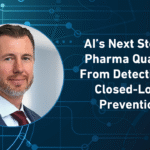Crippling depression: if you live with it, searching for effective treatment options never seems to end. Meds, therapy…but then what? Are you familiar with transcranial magnetic stimulation – or its amped up version, SAINT? Maybe there’s one in your future.
In an early study published by the Stanford research team, approximately 90% of participants who underwent treatment experienced significant relief from depressive symptoms – many achieving full remission.
Introduction
I wrote the original of this piece four years ago. So much has developed regarding Stanford Accelerated Intelligent Neuromodulation Therapy (SAINT) – it became obvious that the article needed an overhaul.
But there’s another reason for the rebuild. Ten days ago, I posted “Transcranial magnetic stimulation: What you need to know.” It’s an overhaul of the original, written seven years ago.
I wanted readers to have access to back-to-back updated neuromodulation posts. Now you do.
As I said in the previous piece, there’s a wealth of information here. There needs to be.
What is transcranial magnetic stimulation?
Since SAINT is a type of transcranial magnetic stimulation (TMS), let’s review a few things.
TMS is a noninvasive treatment that uses magnetic pulses to stimulate specific areas of the brain thought to be causing symptoms of a diagnosed emotional/mental illness. Other types of TMS include intermittent theta-burst stimulation (iTBS) and deep TMS (dTMS). Traditional TMS is also referred to as repetitive TMS (rTMS).
A typical TMS course of treatment is five days a week for four to six weeks.
TMS has been U.S. Food and Drug Administration (FDA) cleared for the treatment of adult major depressive disorder, adolescent depression (ages 15-21), and obsessive-compulsive disorder (OCD). It’s also used “off-label” to treat a wide variety of conditions.
What is Stanford Accelerated Intelligent Neuromodulation Therapy (SAINT)?
There are three features that make SAINT (the SAINT protocol) the most unique form of TMS. Likely the most significant is its use of high-frequency stimulation. Another distinguishing feature is it’s fully customized.
And the combination of the two gives rise to the third distinguishing feature – an accelerated treatment timeline.
Let’s take a closer look…
High-frequency stimulation

Prefrontal cortex
Okay, SAINT utilizes high-frequency magnetic pulses. “High-frequency” – what does that mean? SAINT is delivering pulses at 10 Hz, aka 10 cycles per second.
Brainwaves between 8 and 13 Hz are known as alpha waves. That’s important to know because individuals with depression often show decreased alpha wave activity, particularly in the left frontal region of the brain. So it makes sense that it’s been associated with negative emotional states and reduced cognitive flexibility.
Bottom-line: the delivery of alpha waves triggers neuroplasticity – the process by which the brain reorganizes its neural connections in response to change. In this case, the result is improved connectivity in depression-related areas.
You’re likely familiar with other alpha wave enhancers, such as meditation and mindfulness practices, neurofeedback training, binaural beats and sound therapy, and starting an exercise program.
Fully customized
SAINT being fully customized means your doctor takes images of your brain using functional MRI (fMRI), which allows them to deliver pulses to targeted areas.
SAINT and traditional TMS aim stimulation at the left dorsolateral prefrontal cortex (DLPFC). You can see its location above. The DLPFC regulates executive functions, such as working memory, attention, planning, and reasoning, as well as regulating and controlling cognition and emotion.
Another SAINT target is a specific subregion of the brain that has a working relationship with the subgenual cingulate (aka Brodmann area 25), known to be overactive in people experiencing depression.
If you’re into the brain anatomy and physiology of depression, you’ll find Brodmann areas interesting.
Accelerated treatment timeline
So the combination of high-frequency stimulation and full customization gives rise to an accelerated treatment timeline. In a session, often lasting just a few minutes, SAINT delivers multiple interventions (usually 10) separated by short breaks – in a single day.
The goal is to produce a rapid antidepressant effect, providing relief within days rather than weeks.
How well does SAINT work?

90% of participants experienced significant relief, some achieving full remission? Not too shabby.
During clinical trials, SAINT showed incredible results. In an early study published by the Stanford research team, approximately 90% of participants who underwent treatment experienced significant relief from depressive symptoms – many achieving full remission.
And keep in mind, many of the participants were resistant to previous treatments, including medications and traditional TMS.
Other clinical trials and studies have shown similar results. As a matter of fact, if you scroll all the way down to the articles I used for information, you’ll see a link for an American Journal of Psychiatry study published in 2020. It’s worth a look-see.
But here’s perhaps the best proof that SAINT works well. In 2022, Magnus Medical, Inc., a medical device company and developer of brain stimulation technology for the treatment of neuropsychiatric disorders, was FDA cleared for the SAINT Neuromodulation System for the treatment of adult major depressive disorder that has failed to achieve satisfactory improvement from prior antidepressant medications in the current episode.
Treating conditions such as obsessive-compulsive disorder (OCD), substance dependence, and autism spectrum disorder is under consideration. And how about this? SAINT may be available in hospital emergency departments and psychiatric units to treat emotional/mental emergencies.
Is SAINT safe?
During clinical trials at Stanford, cognitive functioning was tested before and after treatment. Not only were no negative effects found, the participants’ ability to switch between mental tasks and solving problems improved.
Commonly reported side effects include fatigue, headaches, some discomfort during treatment, and scalp irritation. All are believed to be temporary.
And keep in mind, you have to be medically screened and cleared to be treated.
Health insurance coverage and treatment availability
Yes, SAINT has a fantastic track reccrd, but it’s a relatively new treatment. That means health insurance companies have yet to fully embrace it. I’m thinking that will change in the not too distant future. Still, if you’re considering SAINT, go ahead and run it by your health insurance provider.
But how’s this for a sign of good things to come? On November 12, 2024, the Centers for Medicare and Medicaid Services (CMS) released its final hospital outpatient payment rates for SAINT treatment – effective this past January.
Absolutely, being treated with SAINT without health insurance coverage is a tough financial proposition. However, there are ways to soften the blow, such as choosing TMS treatments that are similar to SAINT, but cost a lot less.
When it comes to availability, again, SAINT is a new. treatment. There aren’t a lot of facilities offering it just now. I believe when health insurance companies begin to consistently provide coverage, that will change. In the meantime, are you looking for providers? Here you go.
For much more on costs, treatment and payment options, and availability, check out this article from Cognitive FX: “Is SAINT TMS Right for Me? What It Is & Factors to Consider.”
SAINT is something special
It isn’t often that I get to feel this good about a new treatment for an emotional/mental illness – and have the pleasure of writing about it.
What can I say, SAINT is that good. But why wouldn’t it be? We’re talking about alpha waves being efficiently delivered in sufficient quantities to areas of the brain known for decreased alpha wave activity – which causes negative emotional states and reduced cognitive flexibility in individuals with depression. And it has an excellent side effects profile. I mean, come on.
SAINT is something special.
Be sure to read part one of our neuromodulation series: “Transcranial magnetic stimulation: What you need to know”
Bill White is not a physician and provides this information for educational purposes only. Always contact your physician with questions and for advice and recommendations.
The following were sources of information for this piece. Sure, tap the links…
“Stanford Accelerated Intelligent Neuromodulation Therapy (SAINT)” Stanford Medicine
“Stanford Accelerated Intelligent Neuromodulation Therapy (SAINT)” Iowa Health Care
“What Is the SAINT protocol for TMS?” Therapy Near Me
“SAINT Treatment Cost vs. Alternatives: What’s the Best Option?” Cognitive FX
Alpha Brain Waves: A Natural Approach to Combating Anxiety and Depression NeuroLaunch
Find a Privider Magnus Medical
“Is SAINT TMS Right for Me? What It Is & Factors to Consider.” Cognitive FX
I encourage you to read the study published in the American Journal of Psychiatry in 2020: “Stanford Neuromodulation Therapy for Treatment-Resistant Depression.”
And those Chipur emotional and mental illness info and inspiration articles – peruse the titles.
SAINT images: med.stanford.edu, prefrontal cortex image: authors Natalie M. Zahr, Ph.D., Edith V. Sullivan, Ph.D., public domain









